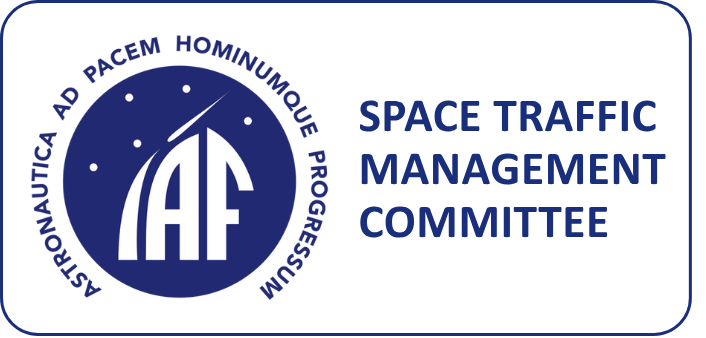Space Traffic Management Committee (2024-2027)
Committee Members
See all members
Co-Chairs
• BAIOCCO Paolo
• DAILEY Nate
• MARZIOLI Paolo
• SANCHEZ-ORTIZ Noelia
Members
• ALARY Didier
• AGUEDA MATÉ Alberto
• ANDREOLI Francesca
• BISWAS Sanat
• BRIGANT Marceau
• CHEMOUL Bernard
• ESCOBAR Diego
• EUN Youngho
• FAUCHER Pascal
• FLOHRER Tim
• GONG Zizheng
• GREGORI Carmen
• GRISHKO Dmitriy
• JANKOVIC Marko
• JU Gwanghyeok
• OMALY Pierre
• OPROMOLLA Roberto
• PAYOT Frederic
• PARDINI Carmen
• SHEPPERD Ryan
• SINGH Balbir
• VELLUTINI Elena
Experts
• KUNSTADTER Christopher
• BATHIA Rachit
• GIALLONGO Simone Giacomo
• MOORE Steven
Objective
The IAF Space Traffic Management Technical Committee TC.26 was founded following the joint decision between IAF (International Astronautical Federation), IAA (International Academy of Astronautics), and IISL (International Institute of Space Law) taken on Oct. 1st, 2018 in Bremen, formalized with a Memorandum of Understanding.
IAF, IAA, and IISL join in a cooperative initiative to develop comprehensive recommendations for behaviors and proposals for STM to be addressed to decision-makers on national and international level in order to promote the safe exploration and use of outer space and minimize hazards to people and property on Earth..
To that extent, IAF STM TC contributes to the preparation of a joint IAF-IAA-IISL “white paper” with the objective of issuing a First Draft by IAC 2021 in Dubai. Coordination among the three entities will take place during the 2021 Spring Meetings in order to finalize the date of issue
Approach
The IAF STM TC aims at synthesizing the work performed under numerous existing entities.
The goal is, therefore, not to come up with ideas which are already well-advanced, but to synthesize these and other ideas and identify aspects in which actions are needed. As such, the focus will be in creating compelling insights and recommended behaviors over a comprehensive review of all dimensions and nuances of the STM challenge.
This Technical Committee serves as a platform for exchanges among experts from diverse affiliations and backgrounds.
A Forum of Exchange will be started on dedicated IAF TC webpage, within which any relevant document can be shared among members of the WG.
Framework
The research activities of the IAF STM TC cover essentially all technical topics related to the general STM ecosystem, meaning:
STM or STCM, Operational Coordination Services, Collision Avoidance (in orbit, at launch and at reentry), including the link and coordination with airspace users during launch and re-entry operations. It also includes Frequency Management and Coordination
The relation between disposal of space hardware and hazards to people on the ground and in aircraft.
SSA (Space Situational Awareness), SST (Space Surveillance & Tracking) and SWE (Space Weather); SSA also includes the NEO topic, but it is not relevant in the context here)
SEM (Space Environment Management) which includes activities such as Space Debris Mitigation, Remediation (ADR (Active Debris Removal), JCA (Just in time Collision Avoidance, …), LDTM (Large Debris Traffic Management), …
SOA (Space Operations Assurance) which covers SEM, SSA and STM
The “interlinks” between topics are fundamental: effective Space Traffic Management (STM) will be difficult to execute without immediate changes in our Space Environment Management (SEM) objectives and behavior (i.e., debris mitigation and remediation).
